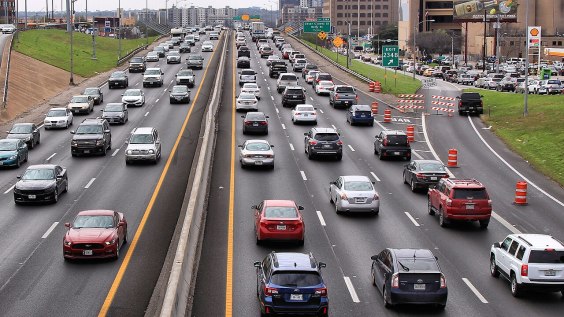 A crew removes an old fare gate at Civic Center station to make way for a new TransLink-only turnstile. Photo: Michael Rhodes
A crew removes an old fare gate at Civic Center station to make way for a new TransLink-only turnstile. Photo: Michael Rhodes While AC Transit, BART, Caltrain, Golden Gate Transit and transbay ferries already accept Translink, in the coming years, nearly every Bay Area transit agency is expected to adopt the payment cards.
That means TransLink could soon be more than just a curious novelty to most Muni
riders, especially if the MTA Board votes tomorrow on a plan to transition all
Muni fare media to the green plastic smart card within the next year or
so, starting with the "premium" Adult "A" monthly Fast Pass this June. Given the variety of vehicle-types and fare media at the MTA and the size of the transit system (more than twice as many daily trips as BART), Muni could have the biggest problem of any local agency in making the complete transition.
The first challenge is general acceptance by the public: Fewer than two percent of Muni rides were paid for using the smart card as of October 2009, despite the fact that TransLink works on all Muni vehicles aside from cable cars. Switching hundreds of thousands of people over to an unfamiliar fare media, and actually getting the card into their hands, will likely prove daunting to the agency. Despite this challenge, the MTA hopes it can accomplish its goal in part by handing out thousands of the cards at locations across the city in the coming months.
Rescue Muni's Andrew Sullivan said the agency should make sure it's easy to get a TransLink card before it requires anyone to use it. "Before requiring anything, they really need to expand availability at the vendors and the vending machines," said Sullivan. "I would ask them to do that before requiring it for anything."
Another difficulty is the capital conversion: The MTA must replace all of its Muni Metro station fare gates with TransLink-only gates. Right now, there simply aren't enough TransLink readers to handle a full transition to the smart card. But that's visibly changing already, as Cubic, the contractor that's installing the TransLink system for Muni, is currently tearing up old fare boxes in the Metro stations and new TransLink-only turnstiles are supposed to be in place by December.
Cable cars are another obstacle. A staff report says Muni now has hand-held TransLink readers on the cable cars, but they are read-only: They'll be able to handle monthly passes, but won't be able to charge a fare. Eventually, cable car operators will need handheld card readers that can charge for fares too, especially the daily and weekly passports popular with tourists.
To meet these challenges, the MTA says it will spend approximately $16.5 million in the next two fiscal years on the plan, with just over $2 million of that cost reimbursed by the Metropolitan Transportation Commission. Of course, for that kind of money, riders will be expecting results, especially as the monthly passes and single-ride fares they load onto the cards continue to escalate in price.
Sullivan said the MTA Board should consider deferring the program until better financial times if the money will come from the agency's operating budget, which already faces a $100 million shortfall over the next two years. MTA spokesperson Judson True was still looking into a request for further information about the budget implications of the plan this afternoon. But Sullivan said speeding up fare collection and enabling all-door boarding could make TransLink a net-positive for the agency's budget in the long term.
"They really need to take advantage of that to enable rear-door boarding on any bus that has it, because that actually saves time," he said.
Regardless, necessity may compel change. Assuming the MTA Board sticks to its decision last Friday to require a premium monthly pass for express routes and cable cars (in addition to the existing premium monthly pass requirement for BART within the city), riders will likely shift their behavior as early as June and use TransLink more often.
Further changes will arrive in relatively short order. By January 31 of next year, almost every monthly pass, including the
senior, youth and disabled Fast Pass, will be transitioned to
TransLink, according to the timeline in the plan. The basic Muni monthly Fast Pass, which is $10 cheaper than the premium pass and is limited to Muni (no BART rides within the city and, soon, no express routes or cable cars) will transition to TransLink-only by April 2011.
Even the most basic Muni fare -- the adult single token -- will transition to TransLink by spring of next year, once Muni has installed machines that dispense limited-use paper TransLink tickets. Even tourists will get to know the limited use tickets well, given that one-day, three-day, and seven-day passports will switch over to the temporary TransLink cards, though the MTA staff report on the plan doesn't include a date for that yet.
That means TransLink, which has taken well over a decade to put in place (and is soon to be re-branded as Clipper,) will finally be a major part of daily life on San Francisco's transit system.




